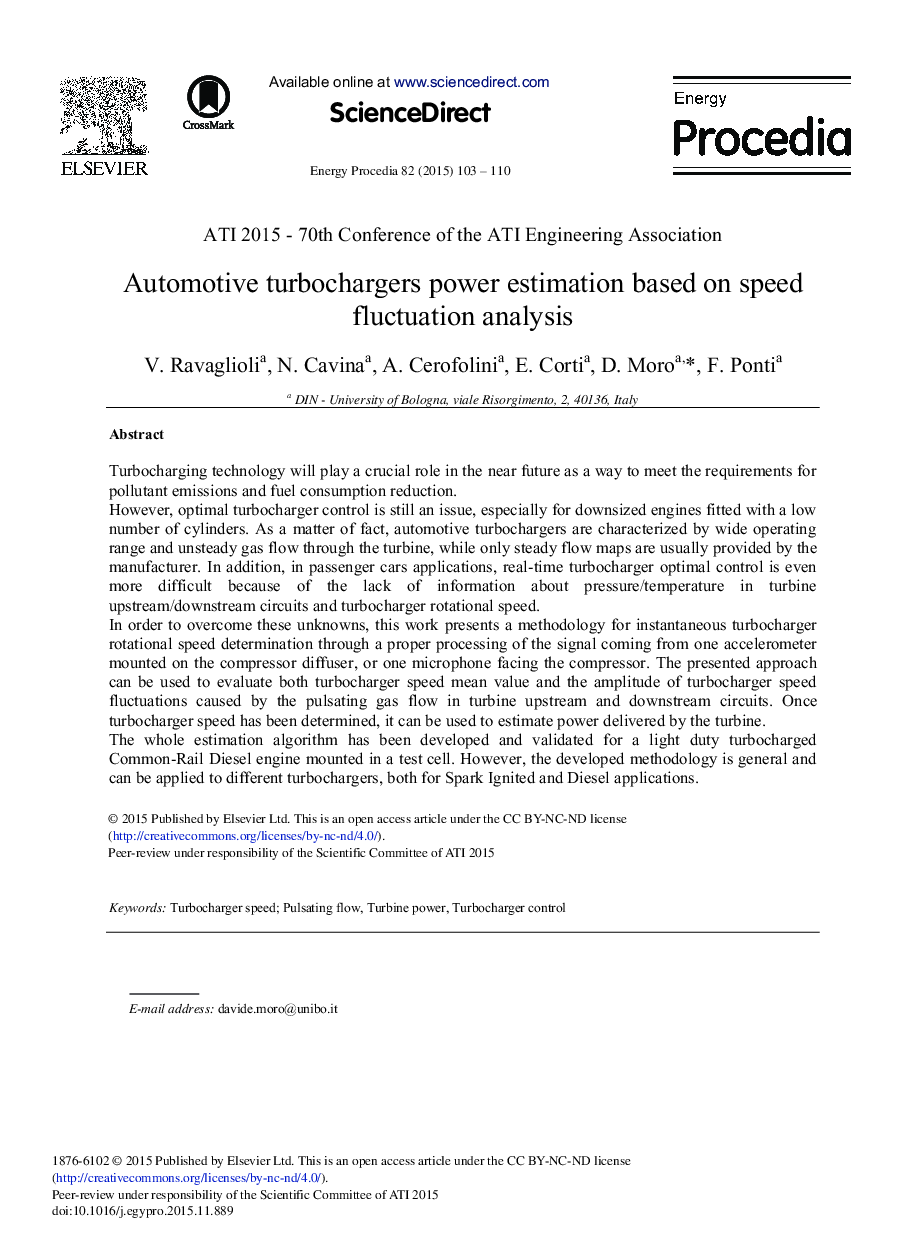| کد مقاله | کد نشریه | سال انتشار | مقاله انگلیسی | نسخه تمام متن |
|---|---|---|---|---|
| 1509045 | 1511153 | 2015 | 8 صفحه PDF | دانلود رایگان |
Turbocharging technology will play a crucial role in the near future as a way to meet the requirements for pollutant emissions and fuel consumption reduction.However, optimal turbocharger control is still an issue, especially for downsized engines fitted with a low number of cylinders. As a matter of fact, automotive turbochargers are characterized by wide operating range and unsteady gas flow through the turbine, while only steady flow maps are usually provided by the manufacturer. In addition, in passenger cars applications, real-time turbocharger optimal control is even more difficult because of the lack of information about pressure/temperature in turbine upstream/downstream circuits and turbocharger rotational speed.In order to overcome these unknowns, this work presents a methodology for instantaneous turbocharger rotational speed determination through a proper processing of the signal coming from one accelerometer mounted on the compressor diffuser, or one microphone facing the compressor. The presented approach can be used to evaluate both turbocharger speed mean value and the amplitude of turbocharger speed fluctuations caused by the pulsating gas flow in turbine upstream and downstream circuits. Once turbocharger speed has been determined, it can be used to estimate power delivered by the turbine.The whole estimation algorithm has been developed and validated for a light duty turbocharged Common-Rail Diesel engine mounted in a test cell. However, the developed methodology is general and can be applied to different turbochargers, both for Spark Ignited and Diesel applications.
Journal: Energy Procedia - Volume 82, December 2015, Pages 103-110
